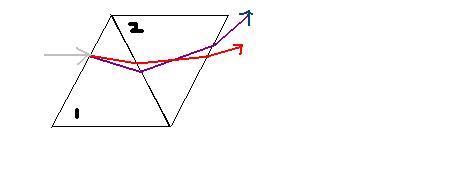- Joined
- Dec 1, 2011
- Messages
- 18,579
- Reaction score
- 57

Two identically shaped prisms are juxtaposed as shown below. Biolet light exits the system above red light, because the average index of refraction of prism 2 is:
A. less than prism 1; light is dispersed more in prism 1
B. less than prism 1; light is dispersed less in prism 1
C. more than prism 1; light is dispersed more in prism 1
D. more than prism 1; light is dispersed less in prism 1
Answer:D
